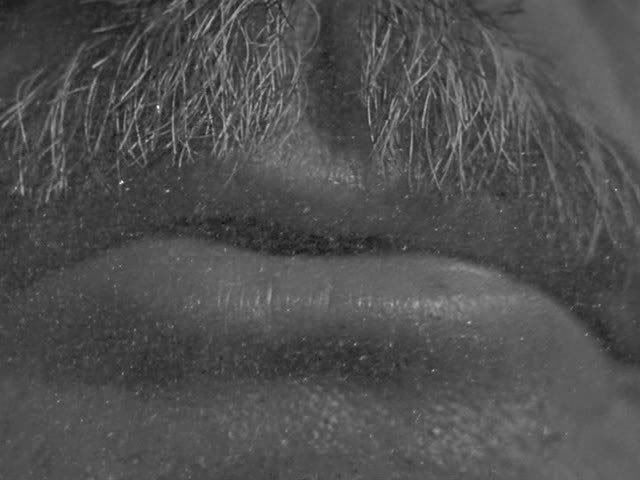
In lieu of anything more substantial I might have to say about one of the most famous and critically analyzed films of all time, I'm going to limit myself to the progression of its opening, the two minutes of introduction leading up to the film's well-known first word of dialogue: "rosebud." Curiously for the opening of this most famous of films, the silent montage that introduces Orson Welles' first feature Citizen Kane is not quite as iconic as so many other images from the film have become, it has not seeped so thoroughly into pop culture — perhaps because its tone, if not its technique, is so distinct from the bulk of the film. The scene is introduced with economy, restraint, and moody static visuals that suggest a horror film to come: the dark, foreboding castle on the hill, shrouded in wispy tendrils of fog, captured in a series of shots that suggest movement not through fluid motion but by blending one static image into another, each new shot slowly inching in closer until, two minutes later, the camera is actually inside the bedroom of this castle's mysterious, dying owner. In a sense, Kane does become a horror film eventually, or a monster movie even, with Welles lurching around in increasingly thick layers of caked makeup as his bellowing newspaper tycoon ages into a bitter, melancholy old man — but it's not until the finale that the film returns to the quiet, elegiac tone of the introduction.
The series of images of the outside of the castle culminates in a shot of the window to Charles Foster Kane's bedroom, and Welles enacts a remarkable 180-degree change of perspective by subtly fading between this image and its mirror opposite, a shot from inside the room in which the window occupies the same position, except that Kane's bed blocks the lower portion. This fade is so subtle, so effective, that its psychological effect — the reversal from looking in to looking out, the closeness to and curiosity about Kane cultivated by this sudden switch — is felt long before more careful examination of the shots reveals how it was achieved. Even more fascinating is the series of fades that shifts from this long shot to the inside of a snow globe and then out again, to the hand holding it and then dropping it, all leading towards that startling shot in which the maid rushing into the room is fleetingly captured in the reflection from the shattered glass. From the very beginning of the film, in two minutes and just twenty shots, Welles announces his technical artistry, establishes the sad, lonely death of his protagonist, and creates a baseline of emotional quietude that undergirds the film even if it seldom reappears in concrete form.





















4 comments:
It is indeed a horror movie -- with the hero his own monster.
The ending, I feel isn't the "anti-climactic" revelation of "Rosebud" -- though the srge of Herrmann's score as the paint peels away in the heat of the flame is as powerful an image od death as any in cinema. The REAL ending is the end credits with the cast and crew taking a final bow via reprise that's a final catalogue search of what we've just been through. And Kane is nothing if not a series of cataogues put together to chart the life of the World's Greatest Hoarder -- before Andy Warhoil snatched the title away.
Remmeber too that the film's last line is thus "I think it would be fun to run a newspaper." It's Thatcher quoting Kane, and Welles commenting on himself.
Love that opening scene, great cinematography and is often underrated, as you state.
Funny though how no one is actually in the room to hear him say "Rosebud" though, the nurse enters after the globe has fallen... which of course makes the entire film based a plot loophole, but oh well!
Tim: Yeah, I noted that too. The butler later says that he heard it, and presumably he was the one who told everyone about it, but of course he doesn't seem to be in the room during the opening. A pretty huge hole, but whatever.
Seriously one of the greatest openings in screen history. No matter how many times I watch this film, read, or think about it I am never less than moved...brilliant post and great images.
Post a Comment